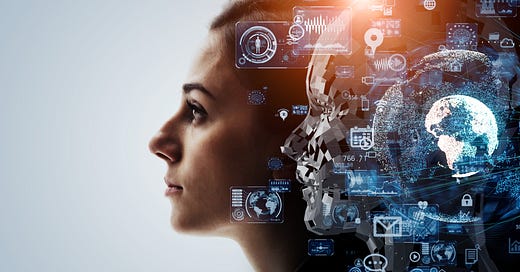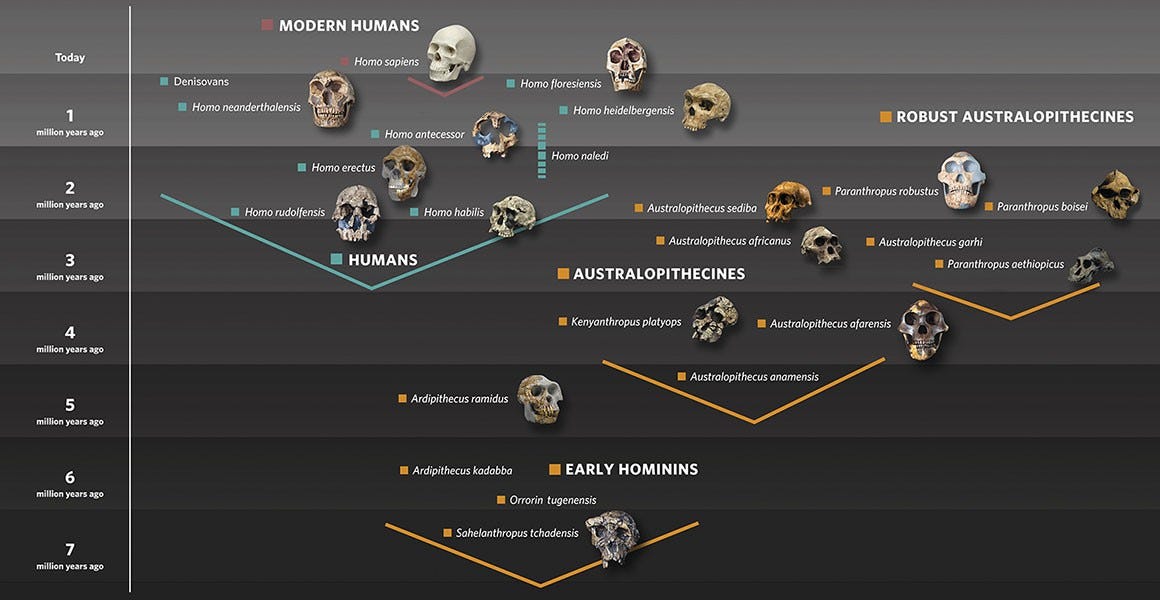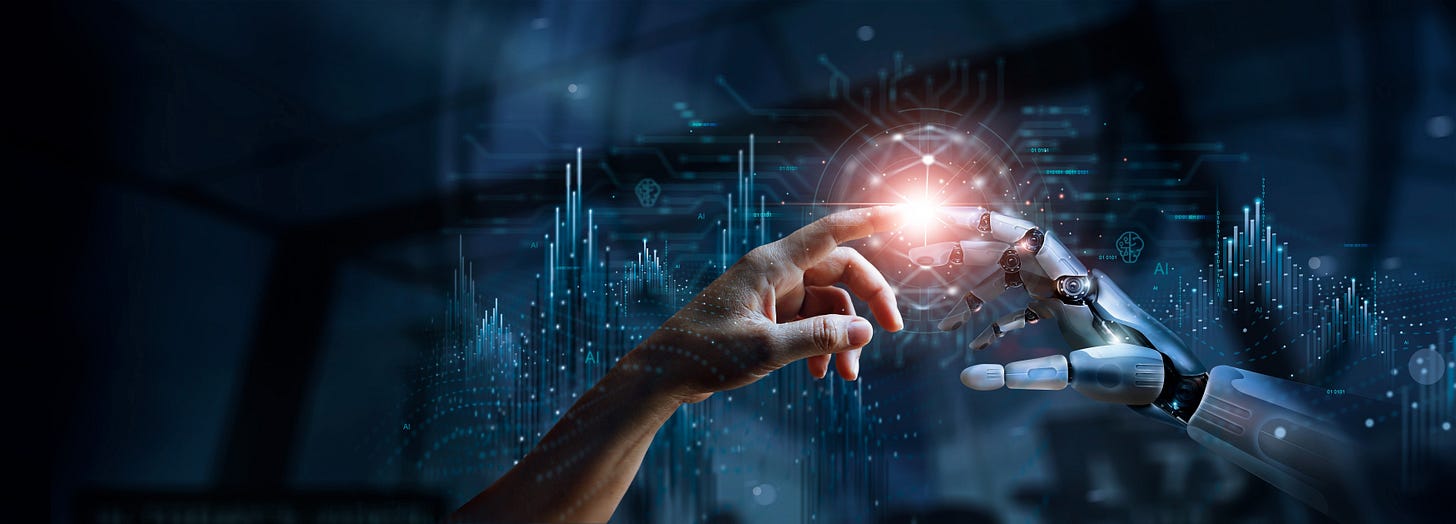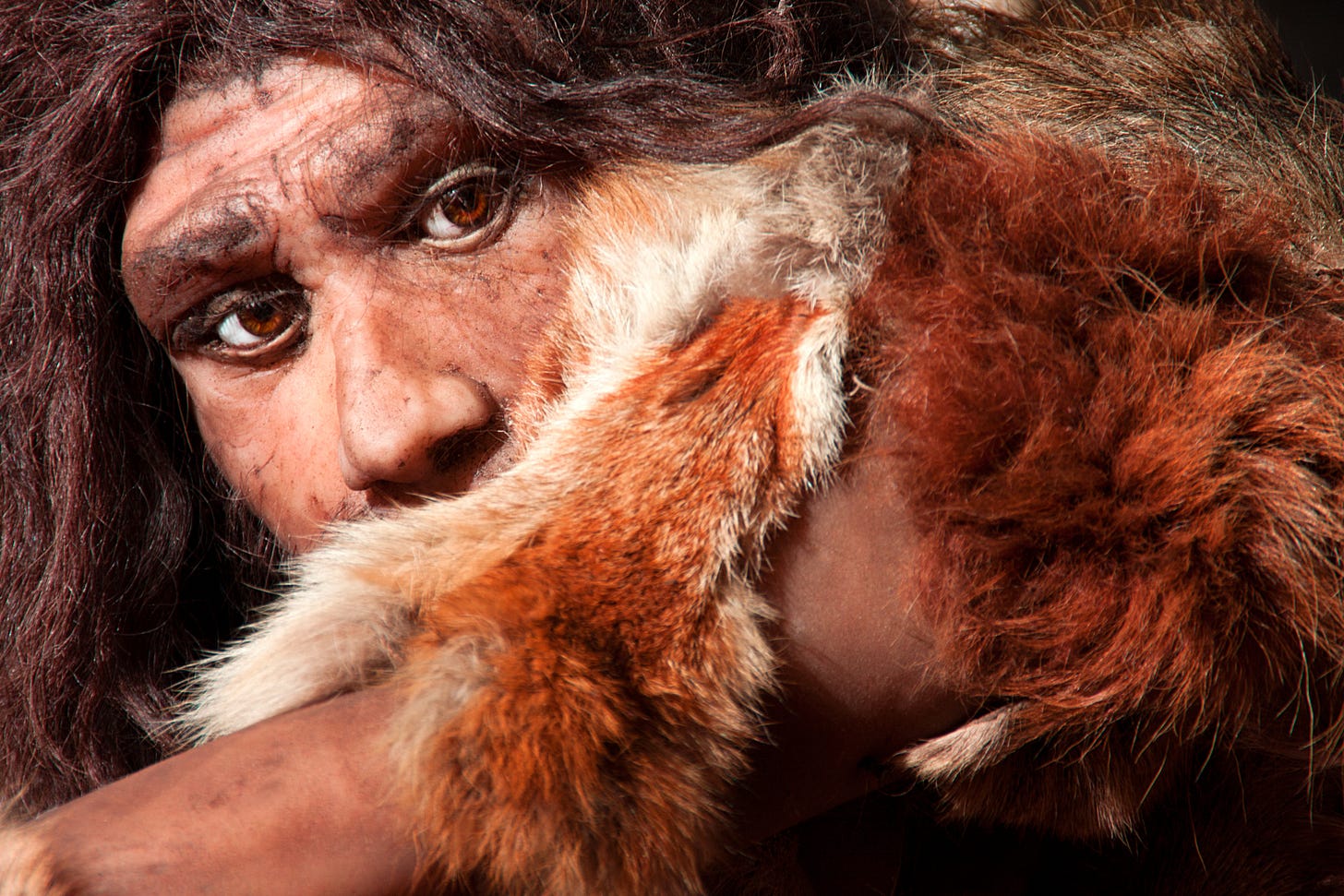The Anthropocene is the latest period in geological history. It is an acknowledgement of the power our species has over shaping the earth physically. The Anthropocene may also be the age of the end of evolution as natural selection and the beginning of consciously or AI directed species modification. Generally human evolution takes hundreds of thousands of years. Homo sapiens first appeared in Africa 300,000 years ago. Anatomically modern people appeared about 200,000 years ago and the contemporary modern brain developed about 100,000 years ago.
However, the natural selection process that created us will probably be supplanted in the not-too-distant future by a process of species self-modification and diversification into other species of the genus Homo. Our growing control of genetics will make it possible for us to take the development of our species into our own hands. The time scale of hundreds of thousands of years has already been short circuited by our knowledge of epigenetics to a single lifetime. Our physical and psychosocial environment affects our physical and mental health by influencing genes to turn on and off, using a process called methylation. For example, smoking tends to activate and deactivate certain genes that have a wide range of impacts on our health, including the way we respond to cancer. Stress, nutrition, and environmental pollution exposure during pregnancy can affect the developing fetus in ways that can result in various physical and mental health disorders.
The underlying DNA has not changed, but the way in which its components are turned on and off does change. When we stop smoking, clean up environmental pollution, reduce stress, and eat better, many of these negative effects are reversible, because the activation and deactivation of various genes returns to the patterns that have been produced by evolution over hundreds of thousands of years. Similarly, however, widespread harmful environmental and psycho-social effects, such as war and famine, can alter entire generations of very large populations.
The first species modification that we are experiencing are insulin pumps for diabetics. These pumps augment the body’s ability to regulate blood sugar and has a widespread effect on our endocrine system of seven organs: hypothalamus, pituitary, thyroid, parathyroids, adrenals, pineal body, the ovaries, and the testes.
We are also developing technology to help people communicate. Perhaps the most famous was Steven Hawking’s voice synthesizer that allowed him to talk despite his almost complete disability caused by ALS. His brilliant breakthroughs in physics might otherwise have been lost to the world. There are now other technologies that augment communication and physical movements using brain waves. New prosthetics and even experimental whole-body exoskeletons are restoring movement to the paralyzed
Our basic genetic structure is not changing any time soon. However, it does interact with environmental, psychological, and social factors through epigenetics. We know that species can differentiate into subspecies. We also know that we share a common heritage with other primates and human-like species called hominins. According to Anna Goldfield, there have been five other human species. We are the only survivors. The genus Homo goes back about 3 million years. As homo sapiens we are part of this genus. The broader family of hominins started about 6 million years ago.
More than likely, our basic structure is not going to change, both because it has been successful on earth over the eons and because we are already augmenting it. We are enclosing the human form in protective simulated terrestrial earth-like environments called space suits and dry suits and a self-contained underwater breathing apparatus (SCUBA) for diving. Essentially, we are protecting ourselves from environmental factors that could drive evolution. Newly developed synthetics for outdoor sports or working in very cold or hot environments are the latest adaptive technologies. Human technology has served us well, whether it is using fire for light, heating, cooking, and security or wearing furs and textiles.
There has been a lot of speculation that living in space habitats or on the surface of other planets will change us physically over time. This has come up in the context of living in reduced gravity environments such as the Moon and Mars. On long-term stays in the International Space Station, the absence of gravity is showing adverse effects on a body evolved to rely on gravity for its successful operation. Bones begin to lose their calcium, muscles show signs of atrophy, and the circulatory system has trouble regulating itself. There can be decreases in blood volume and heart arrhythmia. The psychological effects of isolation and confinement will also challenge our survival. Additionally, our DNA will be subject to larger amounts and types of radiation.
Nevertheless, it is conceivable that we could engineer another Homo species. Officially we are Homo sapiens, but there were 7 other human species including Homo habilis, Homo erectus, and Homo neanderthalensis. To a degree, we have already taken the first steps with robotics and artificial intelligence – AI – in the devices we have created to restore or amplify human physical capabilities and cognition.
The question is whether this new Homo species is robotic; a hybrid carbon fiber silicon-based life form, called Homo roboticus. We could modify our DNA to create a carbon-based Homo sapiens 2.0 that would allow us to overcome the physical and psychological challenges of space travel and colonization. These options and others have been explored in the thought experiments of characters such as Data in the television series Star Trek. Data (Homo roboticus) is a fully self-aware sentient android who develops feelings and emotions. Data is a more benign version of the proto-droid HAL in the movie classic 2001: A Space Odyssey who attempts to terminate the astronauts, since he judges that they are jeopardizing the mission. Various science fiction characters have been altered. Tony Stark is converted into Iron Man by Dr. Ho Yinsen through a series of modifications meant to save his life.
We have also seen armies of droids in various sci-fi movies that are a subordinate species created only to kill. In “The Mandalorian” – one of the latest installments of the Star Wars saga – a war droid is converted into becoming a protective nurse. As he/she/? Is making a final stand to protect our heroes, they are reluctant to leave the droid to a certain “death.” Sensing their grief, the droid tells them to leave and not to grieve for her because he/she/? had never really existed.
We find yet another Homo species in the Star Trek emergency medicine hologram called The Doctor. We might call this new species Homo lux since holograms are made by interfering beams of light. In fact, the master control systems of starships take on human characteristics to interface with humans, but these qualities become something deeper. In a truly human fashion these qualities can bring about great good and great evil.
So where are headed as a species? Perhaps Homo sapiens will reopen the Homo genus into more carbon-based species such as the space traveler Homo sapiens 2.0. The genus could have a virtual hologram species Homo lux and carbon fiber silicon-based species Homo roboticus. Perhaps there could be a hybrid genus of humans and AI, Homo intellectus. Of course, the species of the renewed genus Homo must be self-replicating, but since they are self-aware, self-replication is probably top of “mind.”
Although AI does not have a physical manifestation since it resides in server farms and the “cloud,” it might become such a massive self-replicating force that it could become its own symbiotic species that would drive the creation and development of the genus Homo. There are well founded fears that AI could display such human traits as the domination or destruction of other species including Homo sapiens. Optimistically, given the current auxiliary relationship of AI to humans, it is probably in the best evolutionary interests of both species to have a symbiotic relationship.
We stand on the threshold of a vortex, but we are not the first.









